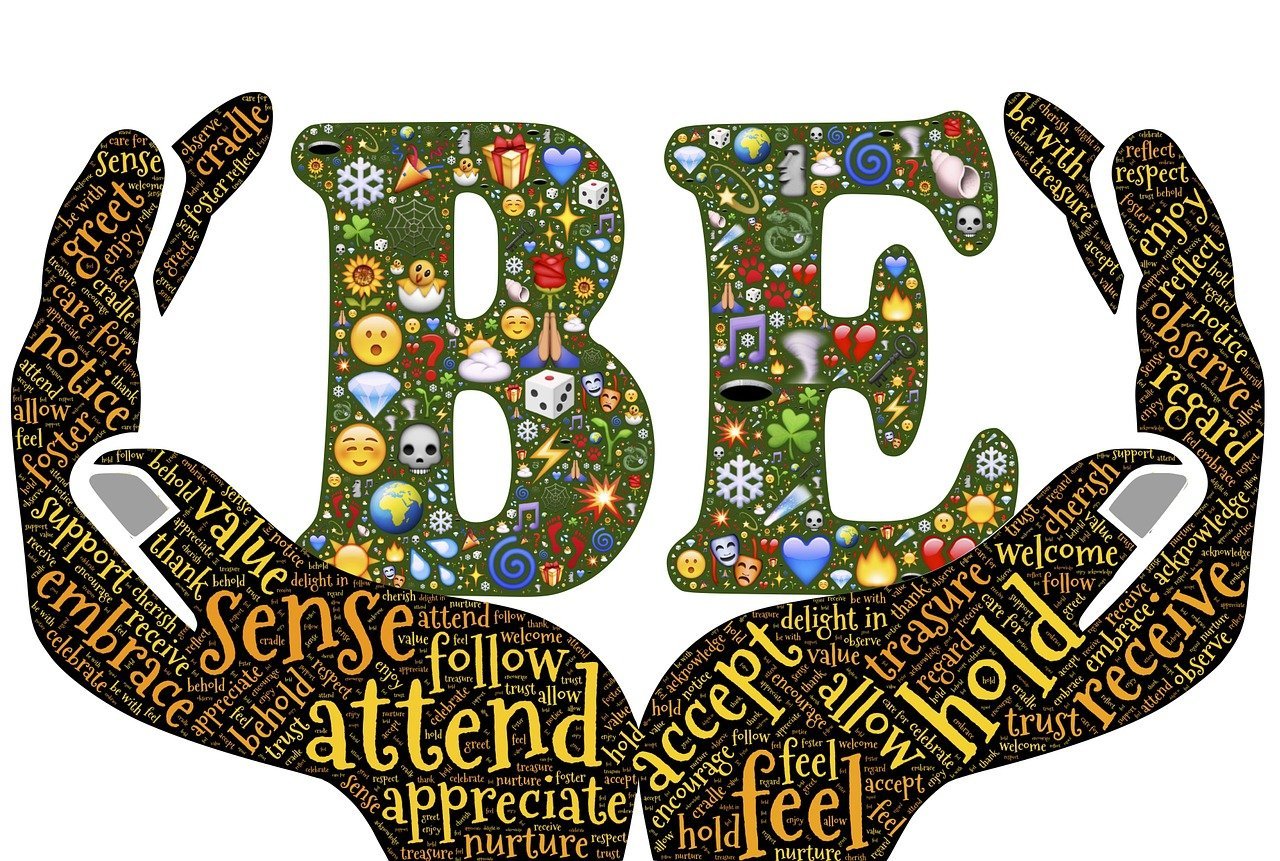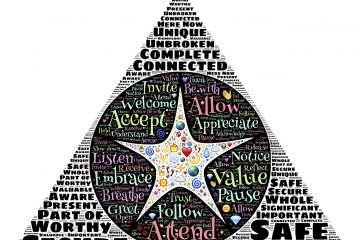
Click below to listen to this article:
Self-acceptance
Self-acceptance is the ability to embrace oneself as a whole, with one’s strengths and weaknesses, successes and failures, virtues and flaws. It is often considered a prerequisite for psychological wellbeing and personal growth. However, self-acceptance can also be seen as a dimension of self-transcendence, the process of going beyond the self in relation to others, nature, or a higher power. In this article, we will explore how self-acceptance can facilitate self-transcendence, and how the two concepts are interrelated and mutually reinforcing. We will also discuss some of the benefits and challenges of cultivating self-acceptance and self-transcendence in our lives.
What prevents self-acceptance?
This is a complex question that has no simple answer. There are many factors that can influence one’s self-acceptance, such as personal history, social environment, cultural norms, psychological traits, and biological factors. Some of the common barriers to self-acceptance are:
Negative self-talk: This is the inner voice that criticizes, judges, or blames oneself for perceived flaws or mistakes. Such self-talk can lower one’s self-esteem and confidence, and make one feel unworthy or inadequate. It has been suggested that for many people, such negative self-talk originates from the shadow world of our unconscious mind, and that the way to being rid of these thoughts is to carry our shadow work to resolve any hidden inner conflicts.
Comparison with others: This is the tendency to measure one’s worth or success based on how one compares to others. Comparison with others can create unrealistic expectations, foster envy or resentment, and undermine one’s unique strengths and values. Psychological theories such as the social comparison theory explain how this works, and why this can often be a bad thing.
Fear of rejection: This is the anxiety or dread of being disliked, judged, or abandoned by others. Fear of rejection can prevent one from expressing one’s true self, pursuing one’s goals, or forming meaningful relationships. Such feelings often originate from our upbringing, and theories such as attachment theory explain how such fears come about and how they impact our behaviour.
Internalized oppression: This is the internalization of negative messages or stereotypes about one’s identity group, such as race, gender, sexuality, or disability. Internalized oppression can make one feel ashamed or inferior, and limit one’s potential or opportunities. We often take on-board such negative messages due to our own lack of self-worth and self-esteem, which makes us look to the outside world to tell us who we are, with a tendency to adopt negative stereotypes about self. This article explains this phenomena in more detail.
These are some of the possible obstacles that can hinder one’s self-acceptance. However, they are not insurmountable. With awareness, compassion, and support, one can overcome these challenges and cultivate a positive and authentic sense of self.
How to cultivate self-acceptance
Many people struggle with self-acceptance and often judge themselves harshly or compare themselves unfavourably to others. How can an individual cultivate self-acceptance and overcome these challenges?
One possible way to foster self-acceptance is to practice mindfulness. Mindfulness is the state of being aware of one’s thoughts, feelings, sensations, and environment in the present moment, without judging or reacting to them. Mindfulness can help an individual to observe their inner experiences with curiosity and compassion, rather than criticism or avoidance. By doing so, they can learn to accept themselves as they are, without needing to change or fix anything.
Another possible way to cultivate self-acceptance is to challenge negative self-talk. Negative self-talk is the habit of thinking or saying negative things about oneself, such as “I’m not good enough”, “I’m a failure”, or “I’m worthless”. Negative self-talk can erode one’s self-esteem and confidence, and prevent them from pursuing their goals and dreams. To challenge negative self-talk, an individual can identify the source and validity of their negative thoughts, replace them with more realistic and positive ones, and use affirmations to reinforce their self-worth and potential. To challenge negative self-talk, an individual can use the following steps:
- Identify the negative thought. For example, “I can’t do this project, I’m too stupid.”
- Evaluate the evidence. For example, “Is this thought based on facts or feelings? What proof do I have that I’m too stupid? Have I done similar projects before? What skills and knowledge do I have that can help me?”
- Replace the negative thought with a more realistic and positive one. For example, “This project is challenging, but I can do it if I work hard and ask for help when I need it. I have learned a lot from my previous projects, and I have some strengths that I can use.”
- Repeat the positive thought as an affirmation. For example, “I am capable and smart. I can do this project.”
Sometimes, the negative self-talk comes from a place deeper than simply negative self-imagery that we have learnt from others. Sometimes such talk comes from what is often called the shadow mind of our unconscious. Such thoughts tend to be difficult to simply challenge, they can recur frequently and will tend to undermine our self-esteem and confidence, sometimes to the point of suicidal ideation. These are often caused by traumas which happened to us in childhood or later, which cause us to dissociate with aspects of self, sending them to the shadows of the unconscious mind. These dissociations can be though of as thought-forms, which often turn up later in life as negative self-talk. One way to heal such thoughts, is by shadow work. Shadow work is the process of digging deep into ourselves in order to resolve those dissociations. There are many therapeutic techniques, such as psychodynamic therapy, which can help with this process.
By challenging negative self-talk, an individual can improve their self-image and confidence, and overcome their self-doubt and fear.
A third possible way to foster self-acceptance is to celebrate one’s achievements and strengths. Many people tend to focus on their flaws and mistakes, and overlook or minimize their accomplishments and talents. This can lead to a distorted and negative self-image, and a lack of appreciation for oneself. To celebrate one’s achievements and strengths, an individual can keep a gratitude journal, where they write down the things they are grateful for each day, such as their skills, abilities, qualities, or successes. They can also share their achievements with others, and receive positive feedback and recognition.
The role of self-acceptance in self-transcendence
self-transcendence is the capacity to go beyond one’s ego and personal concerns, and connect with a higher purpose, value, or reality. The role of self-acceptance in self-transcendence is crucial, as it enables one to overcome the barriers of fear, guilt, shame, and insecurity that often prevent one from reaching a higher level of consciousness and fulfilment. Self-acceptance allows one to recognize and appreciate one’s uniqueness, as well as one’s commonality with others. It also fosters a sense of gratitude, compassion, and generosity, which are essential for self-transcendence. Self-acceptance is not a passive or complacent state, but rather an active and dynamic process that requires constant reflection, evaluation, and adjustment. It is not a destination, but a journey that leads to self-transcendence.
Further reading
If you would like to learn more about self-acceptance, here are some links for further reading:
How to embrace self-acceptance – Verywell Mind
14 benefits of self-acceptance – Psyche Central
Scholarly articles on self-acceptance – Google Scholar




0 Comments